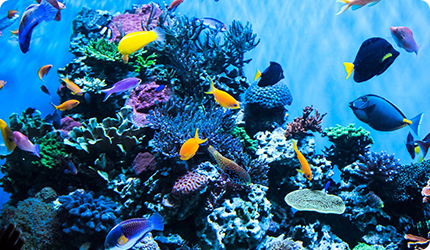Why You Should Add Phytoplankton to Your Saltwater Aquarium
Science-backed reasons every reef keeper should dose phyto regularly
If you’re looking for a natural, effective way to improve nutrient control, fuel your coral growth, and boost copepod populations in your saltwater tank, it’s time to look at one of the ocean’s oldest powerhouses: phytoplankton.
These microscopic organisms may be small, but their impact is huge. Let’s dive into the science of why phytoplankton deserves a spot in your reef tank maintenance routine.
🌿 What is Phytoplankton?
Phytoplankton are microscopic, photosynthetic organisms that float in the water column. Think of them as the grass of the ocean—they’re the foundation of the marine food web.
Species like Nannochloropsis, Tetraselmis, and Isochrysis are popular in reef-keeping for their nutritional value and ease of culturing.
They use light, carbon dioxide (CO₂), and nutrients such as nitrate (NO₃⁻) and phosphate (PO₄³⁻) to grow via photosynthesis—making them natural tools for managing excess nutrients in your tank.
🧪 How Phytoplankton Helps with Nutrient Management
In any saltwater aquarium, waste accumulates. Fish excrete ammonia, which is converted to nitrite and then nitrate. Uneaten food and detritus also contribute to rising nitrate and phosphate levels.
If left unchecked, these excess nutrients can lead to:
-
Nuisance algae outbreaks
-
Reduced coral health
-
Cloudy water
Here’s how phytoplankton helps:
🔬 The Science:
-
Phytoplankton absorbs nitrate and phosphate during growth.
-
When consumed by filter feeders or removed via skimming, it exports those nutrients from your system.
-
This process mimics nature’s biological nutrient export, keeping your reef cleaner and more stable.
It’s a simple way to make your tank work with nature, not against it.
🦐 Phytoplankton Supercharges Pod Production
Pods (copepods and amphipods) are small crustaceans that play a huge role in reef tank health:
-
They’re a natural food source for many fish, especially mandarins, wrasses, and gobies.
-
They clean up detritus and uneaten food.
-
They support a balanced micro-ecosystem.
But here’s the thing: juvenile pods need phytoplankton to survive.
🔬 The Science:
-
Most copepods are herbivorous in early stages and rely on phytoplankton for energy and growth.
-
Regular phyto dosing increases pod survival rates and reproduction.
-
A robust pod population leads to a natural, sustainable food chain in your tank.
Want a self-sustaining pod colony in your refugium? It starts with feeding them phyto.
🧫 Bonus: Feeding Corals and Filter Feeders
Phytoplankton isn’t just for pods. Many reef inhabitants rely on tiny suspended particles to eat, especially:
-
Non-photosynthetic (NPS) corals like sun corals and gorgonians
-
Soft and LPS corals
-
Clams, feather dusters, sponges
🔬 The Science:
-
Phytoplankton are 2–20 microns in size, perfect for capture by filter feeders.
-
Regular dosing can lead to better polyp extension, faster coral growth, and enhanced coloration.
-
It provides a broad-spectrum nutritional boost, especially for systems with low dissolved nutrients.
In essence, phytoplankton bridges the gap between what your reef organisms want—and what they naturally get in the wild.
✅ How to Dose Phytoplankton Properly
Ready to start using phytoplankton? Here’s how to get the most from it:
-
Turn off your protein skimmer for 30–60 minutes after dosing.
-
Start small: Try 1–5 mL per 10 gallons, once a day or every other day.
-
Use live or refrigerated phyto, not just shelf-stable powders.
-
Store refrigerated and shake gently before use.
Pro tip: Watch your tank’s nutrient levels and adjust dosing accordingly. Overdosing phyto is rare, but any food source can fuel unwanted growth if your system isn’t balanced.
💬 Final Thoughts: Small Organisms, Big Impact
Phytoplankton might be invisible to the eye, but it plays a visible role in reef tank success. From nutrient reduction to pod population growth and coral health, it’s a natural, science-supported way to build a thriving marine ecosystem.
Whether you’re growing a high-end SPS reef or a beginner nano tank, phytoplankton can bring balance and biological richness to your aquarium.
📢 Want to Learn More?
Stay tuned for upcoming posts on:
-
How to culture your own phytoplankton
-
Best phyto strains for specific reef needs
-
Step-by-step refugium setup for pod breeding
Or drop a comment below with your questions—we’d love to help you green up your reef the right way. 🌊
